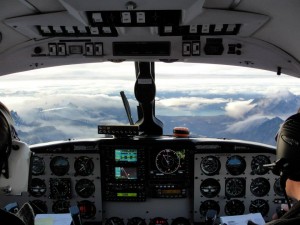Becoming a Commercial Pilot
You’ve probably heard the quote “Find a job you love and you’ll never work a day in your life.” Whether we believe that’s true or not, most of us seek a job that we enjoy. Getting paid to do something you already want to do seems like the perfect combination. I think my job is fantastic because everyday I get to interact with people who love flying just as much as I do. When I meet people who wish they could be flying all the time, one of the common questions they want to know is how to make a career out of flying. Maybe it’s a student graduating high school and looking for a vocation that interests them. Maybe it’s an accomplished professional looking for a different challenge or pace in the next stage of life. Either way the question is the same. “What does the path to a flying job look like?”
First, there are many different types of flying jobs. Most people think of the airlinesas the pinnacle, but there are plenty more options if you want to earn a living flying. You can fly medicine to a remote jungle strip, deliver aircraft to eager customers, or instruct the next generation of pilots. Depending on what you want to do, the path to that end may look widely different. But here are a few common elements.
For someone with no previous flight experience, a private pilot certificate is the way to get started. In order to get paid for flying, you will need a commercial pilot certificate, but that comes after you are already a private pilot. Though not required, most pilots also add an instrument rating before getting a commercial license because eventually most flying jobs will require it and it’s a great way to develop the precision and experience necessary for flying on a daily basis. Once you have a freshly printed Commercial certificate in your pocket, the key to getting a job is usually hours of experience. Typically at this point you might have 200-300 total flight time. If the job you’re looking for is crop dusting, towing banners, or patrolling pipelines from the sky, congratulations, you’re almost there. All you need is enough hours to satisfy your employer. If you want to teach, you can do a little bit more training for a flight instructor’s certificate and get started.
If your eyes are set on something other than the jobs already listed then the only thing holding you back is a little more training (like flying with multiple engines) and a lot more experience. A year from now the minimum flight experience to work for an airline will be 1500 hours and the highest level certificate: airline transport. To achieve that, most pilots will work other flying jobs in the meantime as their experience builds and they are given more training that qualifies them towards their next goal.
So preparing for a job in aviation usually takes a few years but if you’re passionate about aviation, the process itself can be exciting! Fortunately, industry analysts are predicting a desperate need for pilots in the next few years. That means now is the perfect time to get started.

